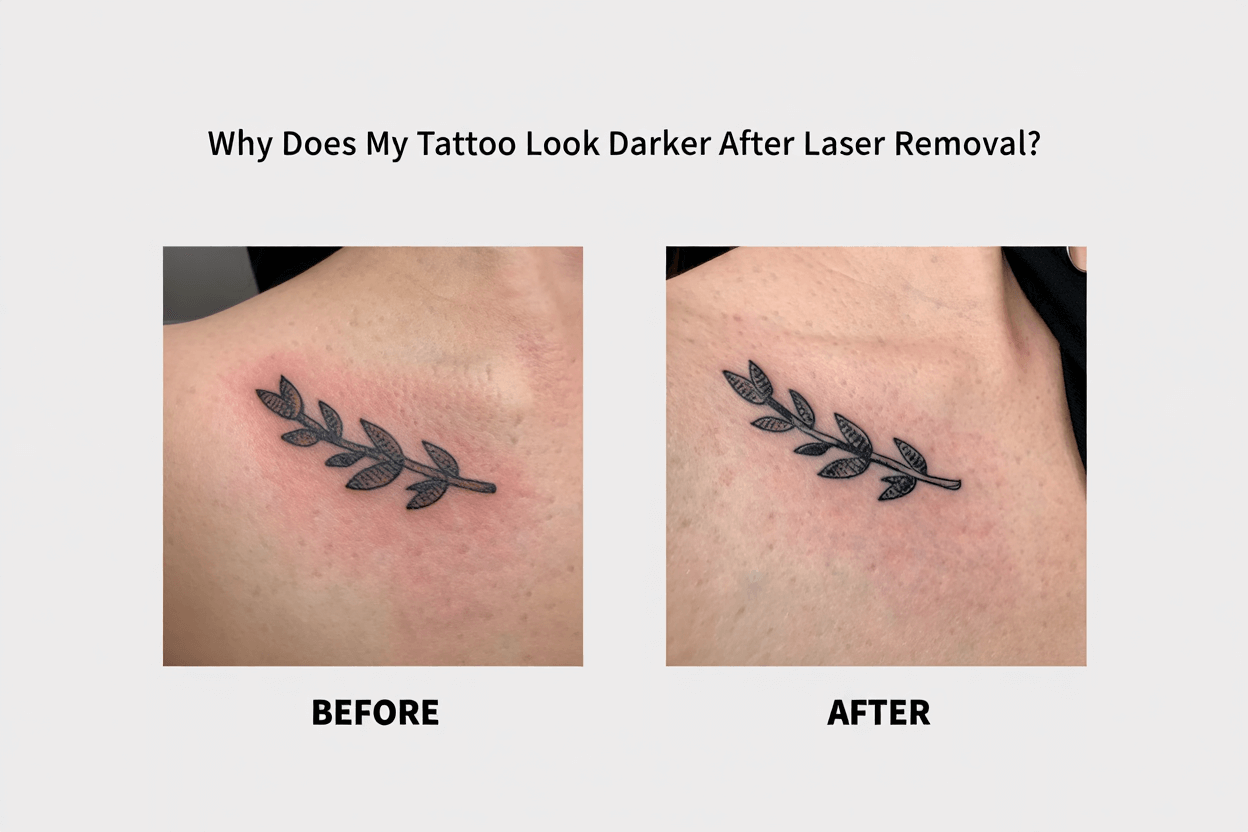You finally made the decision to get your tattoo removed. You sat through the laser session, expected a gradual fade, and then… surprise. Your tattoo looks darker than before. What gives?
Don’t worry. This reaction is more common than you think, and it’s not a sign that something’s gone wrong. In fact, it may even be a good sign. Laser tattoo removal is a process, not a magic eraser, and sometimes what happens immediately after a session can be confusing.
Let’s break down exactly why your ink might look darker before it gets lighter and what’s happening under your skin during the process.
Laser Removal Is Not Instant
The first thing to remember is that laser tattoo removal doesn’t make the ink vanish on the spot. Instead, the laser breaks the ink particles into smaller fragments that your immune system can gradually flush away over the coming weeks.
Different wavelengths target different colors in the tattoo. For darker inks like black or dark blue, the laser is very effective at breaking them up. But just because the laser disrupts the ink doesn’t mean it disappears right away. Instead, there’s a bit of a waiting game while your body gets to work.
Temporary Dark Phase
Right after a laser session, it’s completely normal for the tattooed area to look swollen, red, or even scabby. These are all part of the healing process. But what really surprises most people is when the tattoo actually looks darker than it did before treatment.
This phenomenon is called immediate darkening, and it usually happens with tattoos that contain iron oxides or certain types of pigments. The laser can cause a chemical reaction in the pigment, especially in cosmetic tattoos like permanent eyebrows or lip liner, that temporarily makes it appear darker.
Even if your tattoo is not cosmetic, the treated area may still develop a layer of scabbing or frost-like whiteness that casts a shadow over the tattoo, giving the illusion that the ink has darkened.
The Internal Cleanup Takes Time
Here’s what’s really going on: the laser does its job by breaking up the ink particles. Those fragments don’t exit the skin instantly. Instead, your lymphatic system starts absorbing them and transporting them out of your body.
This internal cleanup takes time. And while that’s happening, your body responds with inflammation. Swelling, bruising, and tissue trauma may momentarily cause the tattoo to look more vivid or blotchy. In some cases, the ink may look more concentrated simply because of how the skin is healing around it.
Tattoo Frosting Isn’t Permanent
You may also notice a whitening effect during or immediately after your session. That’s called frosting, and it’s caused by the rapid release of carbon dioxide from the skin as the laser hits the ink. While frosting can make the tattoo appear cloudy or even disappear temporarily, the effect fades within minutes or hours. It’s not a sign of fading or darkening; it’s just part of the treatment.
Different Inks, Different Reactions
Not all ink reacts to the laser in the same way. Black ink is the easiest to treat and usually responds predictably. Colors like green, yellow, red, and orange can be more stubborn and sometimes react with temporary darkening after the laser hits them.
Some colored inks also contain metallic compounds. When exposed to heat or light from the laser, these compounds can oxidize, leading to a darkened appearance. This is particularly common in older tattoos or amateur tattoos with unknown ink compositions.
Give It Time
The darker appearance after your first or second session can be alarming, but patience is key. The true results of laser tattoo removal don’t show up instantly. Your body needs several weeks to process the disrupted ink and start fading the tattoo.
Most tattoos take multiple sessions to remove completely. It’s during this gradual process that the ink will noticeably break up and lighten. What seems like darkening is often just a stage in the journey.
When to Be Concerned
In rare cases, if your tattoo remains significantly darker for an extended time or if you notice unusual symptoms like spreading redness, pus, or intense pain, it could be a sign of an infection or an allergic reaction. This isn’t typical, but it’s always good to keep an eye on how your skin is healing and to follow aftercare instructions carefully.
If something feels off, don’t hesitate to reach out to your laser technician or a healthcare provider. Otherwise, trust the process.
